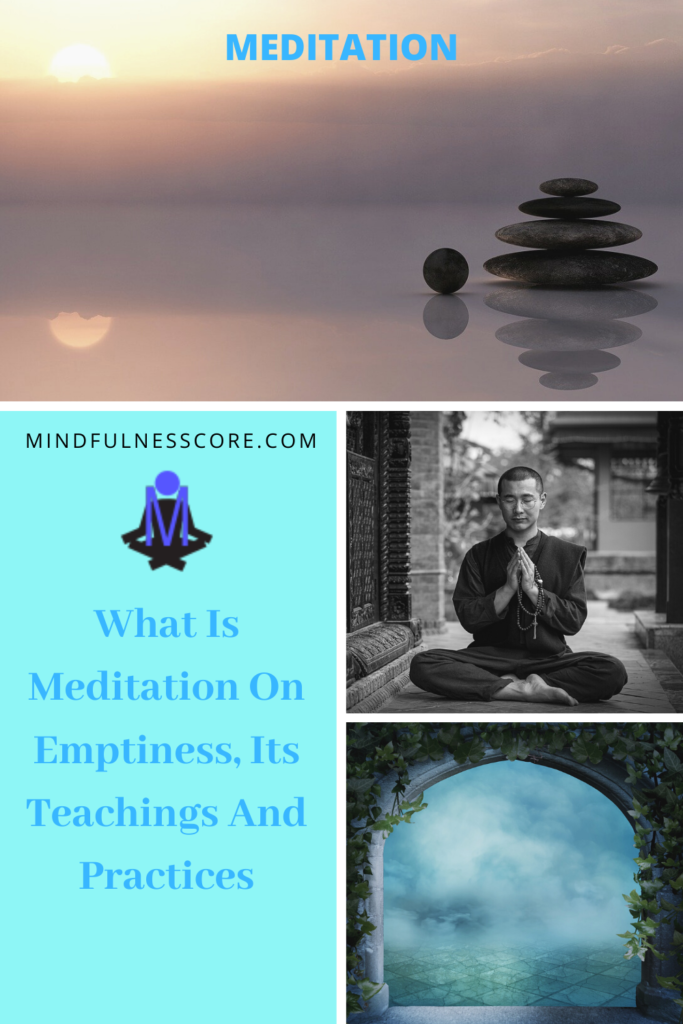What Is Meditation On Emptiness, Its Teachings And Practices
The meditation on emptiness or what is also commonly referred to as the four-point meditation is similar to the seven-point meditation in some aspects. The Buddhist scholar, Lama Je Tsongkhapa was the pioneer of the meditation on emptiness. His primary aim was to merge all of the information from various traditions and to make a collection of the best teachings which could then be disseminated among people as a Dharma. He was a true believer of the Indian and Tibetan scholars and wanted to have their teachings receive the recognition that it deserved. With this goal in mind, he founded the Gelug monastery where the first Dalai Lama namely Gendun Drup became his very first disciple.
The concept of meditation on emptiness is a fairly broad one with various complications that even the monks with years of experience can have a hard time understanding. It is perhaps due to the very nature of “Emptiness”. A range of traditions, cultures, and religions have tried to define and elaborate on the concept of Emptiness with neither of them claiming to be 100% accurate.
Meditation On Emptiness
The fundamental of meditation on emptiness revolves around the absence of a true identity. The absence of a “me” or an “I” which is commonly referred to as the “Ego”. The meditation on emptiness has four pillars which are the reason why it is known as the four-point meditation.
These pillars are as follows:
- The object that is under discussion to be negated.
- The delusion associated with the object and its thorough understanding.
- The proof that in the context of body-mind, it doesn’t exist.
- The proof that outside the context of body-mind, it doesn’t exist independently.
The line of reasoning used for the four-point analysis is called “neither one nor many”. It begins with the recognition of the object that is to be negated. The step 2 persuades that the line of reasoning “neither one nor many” actually negates it, Step 3 is the negative of the “one” and step 4 is the negation of “many”.
Much like any other type of meditation, the meditation on emptiness starts with choosing a peaceful environment to take a comfortable posture in order to relax your body and mind alike. Remember that it is perfectly fine for an expert to try meditation in an environment with minor distractions since practice enables you to push the distractions in the background. For a beginner, however, it is recommended to opt for a completely calm and quiet place that is away from all sorts of noise and distractions. As for the posture, there are a few things to be taken into consideration including the fact that your back should be sufficiently straight that promotes comfort and optimizes breathing. Even if you are using a chair, make sure that your feet are flat on the floor. If you have opted to sit on the floor, there are two options that you can avail. You can either sit with your legs crossed, a posture that is recommended by many. However, it is not easy to follow for quite a lot of us which is why you can choose to place a pillow beneath you and keep your legs parallel. Remember that the entire point of sustaining a posture is to remove all stress from your neck and your back. Don’t be frustrated if you can’t get it right the first time. You will get there with practice.
The Object To Be Negated
The idea here is to think of the object and isolate it from the associated delusional thoughts. Since the object to be negated in meditation on emptiness is yourself, the focus should be on the “I” or “Me”. In the Buddhist culture, it is the concept of “I” that is commonly associated with all of the mental states and the associated delusions.
To begin with the first step, try to [restrict] focus on your thoughts which concern you alone. Remember that the scenario in your mind should be such where “yourself” is a matter of gravity for you. For example, how would you feel if someone blamed you to be a felon? Would you take yourself as an empty construct if someone labeled you as stupid? If the employees at the US Treasury started to burn bundles of retired bills of $20, would it be synonymous to burning great wealth for you? Consider this; the $20 bills are nothing but pieces of paper unless they are designated as the $20 bills by the US Treasury. Similarly, our designation is derived from the thoughts for the most part. However, there are a few times when our designation becomes concrete. You are required to think of one such situation.
The Delusions Of The Object
Once you have successfully recognized the object that is to be negated, you can move on to the next stage of the meditation on emptiness which is to understand the delusions associated with the object. Since your entire meditation will be based on it, it is important to have a thorough understanding of it. The meditation can be considered as the blend of single-pointed and analytical in terms of its nature. It is single-pointed since you are keeping your entire attention on the object to be negated. On the other hand, it is also analytical since you are making a thorough analysis of the associated delusions. Like any other technique of meditation, focus and attention is the key here. Of course, you can’t master it in a matter of minutes or hours for that matter. You are going to have to practice it for days before you can learn to be in charge of it completely.
In order to established whether the object to be negated is delusional or not, the following is used:
- Consider the object as inherently separate as compared to the aggregates of mind and body.
- Consider the object as inherently the same as compared to the aggregates of mind and body.
- Consider the object as both separate and one as compared to the aggregates of mind and body.
- Consider the object as neither separate nor one as compared to the aggregates of mind and body.
The aggregates can represent perceptions, feelings, mental formations, sensations, consciousness, thought processes, or the form that includes the physical parts of the body such as the tongue, ear, nose, eyes, etc.
Existence In Relation To The Mind-Body
The third stage of meditation on emptiness entails a thorough understanding that the object doesn’t exist in relation to the complex of the mind and the body. In the third stage, you establish that the inherent “I” has no existence as one when compared to either the body or the mind. In order to be successful at this stage, you need to make a detailed examination of your mind and body while also focusing on the “I” and how do you perceive or sense it, in the first place. The concept can be explained conveniently by analyzing the phrase “my mind”. There is an implication that if the inherent “I” and the mind are in fact one and the same thing, then the two words of this phrase namely “my” and “mind” should mean the same thing and there should be no reason to use these two words together. Similar is the case with the phrase “my body”. If “my” and “body” are inherently the same thing, then they should mean the same thing which eliminates the need of putting these two words together.
Independent Existence Outside The Complex Of Mind-Body
The fourth and the final step of the meditation on emptiness considers the independent existence of the object and establishes that the “I” can’t exist outside the complex of mind-body. So the third step of the four-point analysis established that the inherent “I” doesn’t mean the same thing as the mind or the body. And in the fourth step, we are establishing that the existence of an inherent “I” outside this complex of mind and body is not possible either. This can be conveniently understood by simple phrases like “my heart is broken”, or “my leg hurts”. The fact that the word “my” is being used with a form (the physical part of the body such as the heart or leg), implies that the inherent “I” has no different existence as compared to the aggregates.
Conclusion
This is how the line of reasoning of “neither one nor many” is applied to the meditation on emptiness. You apply this reasoning to establish that an inherent “I” is NEITHER the same as the aggregates of mind and body NOR does it have any existence separate from the aggregates. As mentioned earlier, the concept of meditation on emptiness is a complicated one. If it has taken this much effort into reading and understanding the concept, you can only imagine how long it will take to master it and reap its full benefits. Therefore, practice and patience is the key to meditation on emptiness. [/restrict]


